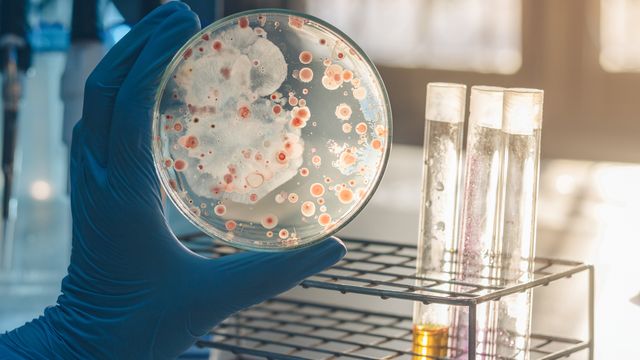Anaerobic Bacteria Culture Testing in Animal Samples
Animal health is a critical component of veterinary medicine and animal husbandry. Ensuring the well-being of animals through accurate diagnosis and treatment is paramount, especially when dealing with infections that are difficult to diagnose due to their anaerobic nature. Anaerobic bacteria culture testing is an essential procedure in microbiology for identifying pathogens that thrive in oxygen-free environments within animal samples.
During this process, the sample undergoes meticulous preparation to ensure accurate and reliable results. The specimen must be collected aseptically and transported under strict anaerobic conditions if necessary. Once received at our laboratory, the sample is processed using standardized methods. The culture media used for anaerobic bacteria are specifically formulated to support growth in low-oxygen environments.
The testing procedure involves inoculating the prepared sample onto appropriate media plates or into suitable broth cultures under controlled anaerobic conditions. Incubation periods vary depending on the suspected pathogen, but typically range from 18 to 48 hours. After incubation, any colonies that appear are carefully examined for morphological characteristics and biochemical reactions.
Standard operating procedures (SOPs) strictly adhere to international standards such as ISO and ASTM guidelines. This ensures consistency and accuracy in our testing methodologies. Positive cultures are then identified through species-specific confirmatory tests like API tests or MALDI-TOF mass spectrometry. Negative results, while equally important, indicate that no significant pathogens were detected.
Our laboratory personnel undergo rigorous training to handle these complex samples safely and effectively. Proper personal protective equipment (PPE) is worn at all times during sample handling and processing. This not only ensures the safety of our staff but also minimizes contamination risks within the facility.
The importance of anaerobic bacteria culture testing cannot be overstated, particularly in cases where conventional aerobic cultures fail to yield conclusive results. By providing precise identification of anaerobic pathogens, we enable veterinarians and researchers to make informed decisions regarding treatment options and management strategies for infected animals.
- Specimen preparation: Aseptic collection and transport under controlled conditions.
- Inoculation methods: Use of appropriate media plates or broths.
- Incubation: Controlled anaerobic environment with specific incubation times.
- Species identification: Utilization of confirmatory tests for accurate results.
The findings from our testing are reported promptly and accurately, ensuring timely intervention where necessary. Our comprehensive reports include detailed descriptions of the observed cultures, along with recommendations for further action based on our findings. This service plays a vital role in maintaining animal health across various sectors including zoos, farms, and veterinary practices.
Industry Applications
Anaerobic bacteria culture testing is crucial across multiple industries where animal health is paramount:
- Zoological Parks: Ensuring the well-being of exotic and domestic animals by identifying potential pathogens early.
- Farms: Preventing widespread disease outbreaks that could impact livestock productivity.
- Veterinary Practices: Facilitating faster diagnosis and effective treatment plans for pet owners.
In each application, the accurate identification of anaerobic bacteria is vital for preventing further spread of infection, reducing mortality rates, and enhancing overall animal welfare. This testing service contributes significantly to maintaining robust health standards in these sectors.
Quality and Reliability Assurance
The reliability of our anaerobic bacteria culture testing is guaranteed through stringent quality control measures:
- Compliance with ISO 17025 standards for proficiency in laboratory practices.
- Regular calibration of equipment to ensure accurate results.
- Continuous staff training and development programs focusing on the latest techniques.
- Use of standardized media and reagents that meet international quality benchmarks.
We also participate in external proficiency testing programs, such as those conducted by AOAC International or CAP, to validate our methods continually. These initiatives help us maintain high standards while ensuring consistent accuracy across all tests performed at our facility.
Customer Impact and Satisfaction
The impact of accurate anaerobic bacteria culture testing extends beyond individual animals; it influences broader public health, environmental sustainability, and economic stability:
- Improved Animal Welfare: Prompt diagnosis leads to more effective treatments and recovery.
- Economic Benefits: Prevention of costly outbreaks saves resources for both private practices and larger organizations.
- Environmental Protection: Healthy animals contribute positively to ecosystems, reducing environmental stressors.
We strive to exceed customer expectations by offering personalized service tailored to specific needs. Our dedicated team works closely with clients throughout the process, ensuring clear communication and comprehensive understanding of results. Positive feedback from our customers underscores our commitment to excellence in this field.





